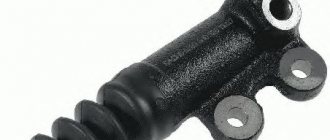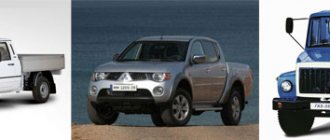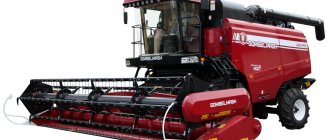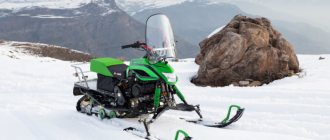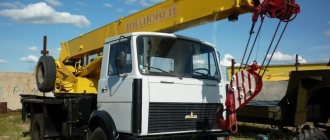The first excerpt of the third part of the series of guides for beginners. Almost everything you need to know to find reference information for your system. In short, RTFM and don't ask stupid questions.
Navigating Linux Basics from the Gentoo Founder:
Part I: 1, 2, 3, 4
Part II: 1, 2, 3, 4, 5
Part III
- Documentation
(introduction)- Access rights model
- Account management
- Setting up the environment (summaries and links)
Preface
About this guide
Meet Advanced Administration, the third of four guides designed to help you prepare for the Linux Professional Institute's 101 (2nd Edition) exam.
This part is ideal for those who want to improve their knowledge of the fundamentals of Linux administration. We'll cover a range of topics, including system and internet documentation, the Linux permissions model, managing user accounts, and configuring the login environment. If you're new to Linux, we recommend starting with Parts and . Much of the information in this tutorial will be new to some, but more experienced users can use it to sharpen their Linux administration skills.
At the end of this series of tutorials (there are eight in total, preparing you for the LPI 101 and 102 exams), you will have all the knowledge you need to become a Linux systems administrator, and you will be ready to receive your LPIC Level 1 certification from the institute Linux Professional.
System and network documentation
Types of System Documentation in Linux
There are three main sources of documentation on Linux systems: man pages, info pages, and application-supplied documentation in /usr/share/doc
. In this section, we will look at each of these sources before looking to the outside world for more information.
Manual Pages
Manual pages, or “man (from the English manual - manual) pages”, man pages, then simply man, are a classic form of UNIX and Linux help documentation. Ideally, you can find mana for any command, configuration file or library. However, in practice, Linux is free software and some of the manual pages were not written or are out of date. However, mana remains the first place to turn for help.
To access mana, simply type man followed by your request. A pager program (viewer, usually less or more) will launch with help information. To close it, press the q key. For example, to view information about the ls command, type:
$ man ls
Knowing the structure of mana will help you quickly navigate to the information you need. Typically, you will find the following sections in the mana:
| NAME | Command name and one-line description |
| SYNOPSIS (REVIEW) | Short review |
| DESCRIPTION | In-depth description of the team's functionality |
| EXAMPLES | Tips for use |
| SEE ALSO (SEE ALSO) | Related topics (usually also man pages) |
Man page sections
Files containing mana information are stored in /usr/share/man
(or
/usr/man
on some older systems). In this directory you will find manual pages organized into the following sections:
| man1 | User programs |
| man2 | System calls |
| man3 | Library functions |
| man4 | Special files |
| man5 | File formats |
| man6 | Games |
| man7 | Other |
Numerous man pages
Some topics exist in more than one section. To demonstrate this, we will use the whatis command, which shows the available mana for the topic:
$
whatis printf
printf (1) — format and print data printf (3) — formatted output conversion
In this case, man printf will default to the page in section 1 (User Programs). If we're writing a program in C, we're probably more interested in the page in Section 3 (Library Functions). You can call the man of the required section by specifying this on the command line, so to call printf(3) we will enter:
$ man 3 printf
Finding the right mana
Sometimes it is difficult to find the right man page for a given topic. In this case, you can use man -k to search the “NAME” sections of the man pages. But be careful because it's a substring search and something like man -k ls will return a lot of stuff! Here is an example of using a lookup query:
$
man -k whatis
apropos (1) — search the whatis database for strings makewhatis (8) — Create the whatis database whatis (1) — search the whatis database for complete words
All about “apropos”
The previous example is not accidental. First, the apropos command is exactly the same as the man -k command. (In fact, I'll even let you in on a little secret. When you run man -k, apropos is actually started behind the scenes). Secondly, there is the makewhatis command, which scans all the pages on your Linux system and creates a database for whatis and apropos. Usually it is launched periodically from root to keep the database up to date:
# makewhatis
For more information about the man team and its friends, you should start by checking out its own man page:
$ man man
MANPATH
By default, the man program will look for man pages in /usr/share/man
,
/usr/local/man
,
/usr/X11R6/man
, and maybe
/opt/man
.
You may want to add a new item in this search path. To do this, simply open /etc/man.conf
in a text editor and add a line like this:
MANPATH /opt/man
From now on, manual pages in the /opt/man/man* directories will also be found. Remember that you need to run makewhatis to add new mana to the whatis database.
GNU info
One of the limitations of manual pages is that they don't support hypertext, so you can't simply jump from one manual to another. The guys at GNU saw this flaw and introduced a different documentation format: info pages. Many of the GNU programs come with extensive documentation in the format of info pages. You can start reading info pages using the “info” command:
$ info
A simple call to the info command will give you a list of available info pages on your system. You can navigate through it using the arrow keys, follow links (which are marked with an asterisk) using the Enter key, and exit by pressing q. The navigation is based on that of Emacs, so if you're familiar with the editor it'll be easy to get started with. To get started with Emacs, see the developerWorks tutorial: Living in Emacs.
You can also specify the desired info page on the command line:
$ info diff
For more information on using the Info Page Viewer, try reading its own Info Page. You will be able to navigate through the document simply by using a few keys that I have already mentioned:
$ info info
/usr/share/doc
There is another source of help for your Linux system. Most programs come with additional documentation in other formats, such as: plain text files, PDF, PostScript, HTML. Look in the usr/share/doc directory (or /usr/doc on older systems). You'll find a long list of directories, each of which comes with a specific application on your system. Searching this documentation may lead you to very valuable information that is not available in manas or info pages, such as tutorials or additional technical documentation. A quick glance indicates that there is a lot of reading material here:
$ cd /usr/share/doc
$
find . -type f | wc -l
7582
Eww! Your homework for this evening will be to read only half (3791) of these documents. Please note, there will be a survey tomorrow.
Linux Documentation Project
In addition to system documentation, there are a number of excellent Linux resources on the Internet. The Linux Documentation Project (LDP) is a group of volunteers dedicated to compiling a comprehensive set of free documentation for Linux. This project exists to collect various pieces of Linux documentation in a specific place where it can be easily found and used.
LDP Review
LDP consists of the following sections:
- Guides - large, very serious manuals, such as The Linux Programmer's Guide (Linux Programmer's Guide)
- HOWTOs - help on a specific topic, such as DSL HOWTO
- FAQs - collections of answers to frequently asked questions, like this Brief Linux FAQ
- Man pages - help for a specific command (these are the same mans that you see on your system when you use the man command).
If you are not sure which section to look at, you can use the rich search capabilities, which will allow you to find everything there is on the topic.
LDP also provides access to a list of links and resources such as the Linux Gazette and Linux Weekly News, as well as mailing lists and news archives.
Mailing lists
Mailing lists are probably the most important means of communication among Linux developers. Often projects are developed by participants living at great distances from each other, perhaps even on opposite sides of the globe. Mailing lists provide a method of interaction in which each project developer can contact everyone else and discuss together via email. One of the most famous developer mailing lists is the Linux Kernel Mailing List.
More about mailing lists
In addition to development, mailing lists can provide the opportunity to ask questions and receive answers from knowledgeable developers or even other users. For example, individual distributions often provide a mailing list for newcomers. You can check your distribution's website to see what mailing lists it offers.
If you've taken the time to read the LKML FAQ linked above, you may have noticed that mailing list subscribers are often unfriendly to questions that are repeated frequently. It's always wise to search the mailing list archives before asking your question. Chances are it will save your time too!
Newsgroups
Newsgroups on the Internet are similar to mailing lists, but are based on a different protocol called NNTP (Network News Transfer Protocol) rather than email. To be able to communicate, you will have to install an NTTP client such as slrn or pan. The main advantage is the fact that you can take part in the discussion when you need it, rather than constantly watching it crash into your inbox
The news groups starting with comp.os.linux are of greatest interest. You can view the list of groups on the LDP website.
Supplier sites and others
The websites of various Linux distributions often provide updated documentation, installation instructions, hardware compatibility or incompatibility information, and other support tools such as knowledge base searches. For example:
- Redhat Linux
- Debian Linux
- Gentoo Linux
- SuSE Linux
- Caldera
- Turbolinux
Hardware and Software Suppliers
In recent years, many device and software vendors have added Linux support to their products. On their websites you can find information about what hardware Linux supports, find program development tools, sources, download drivers for Linux for a specific device, and also learn about various other Linux projects. For example:
- IBM and Linux
- HP and Linux
- Sun and Linux
- Oracle and Linux
.
The translation was carried out by the collective mind with the help of notabenoid.com.
Thanks to the Habrians (in alpha order): DMinsky, habrrich and kindacute (on Habr?). Their karma deserves benefits. If I haven’t mentioned anyone, please write in a personal message or in the comments.
Continuation…
"Square" by the Jeffery Brothers
Some art lovers admire the “Black Square” by the artist Kazimir Malevich, and car history buffs admire the “Square” by the Jeffery brothers. The “Jeffery Quad” truck (that’s what it was called in Russian at that time; in American advertisements for Russia one sees “Jeffery Quad”) looked really square, or rather rectangular. But it got its name not because of its shape, but because of its four-wheel drive.
In Kenosha, they studied a similar American FWD vehicle, got acquainted with similar European designs in the specialized press and decided to make their own, incorporating into it many progressive technical solutions, not only those of others, but also their own. The first tests exceeded all expectations; the all-terrain vehicle turned out to be very successful. The American army appreciated the qualities of the vehicle, especially its maneuverability, and became interested in it, but was in no hurry to place serious orders. At that time, her motorization was at a very low level, there was no need for it. Jeffery Quad found its first buyers in industrial circles, and dump trucks based on it became popular. In 1914, Jeffery produced 10,417 cars and 3,096 trucks, the latter including "squares."
The design of the machine with a lifting capacity of 1.5–2 tons was distinguished by a number of progressive solutions. The truck had permanent four-wheel drive. All wheels were steerable and equipped with band-type brakes; the turning radius of a car with a wheelbase of 3048 mm was only 6.7 m. The Buda HU four-cylinder engine with a displacement of 5113 cm3, shifted to the right, developed a rated power of 28, 29 or 32 hp. (depending on modifications, the maximum reached 53 hp) and allowed the car to move at a maximum speed of up to 35 km/h. Considering the engine operates at high speeds in off-road conditions, a radiator with a large cooled surface area was used to protect it from overheating. Other features include a disc clutch, a four-speed gearbox with a built-in transfer case, disc wheels, and massive solid tires. There were experimental modifications of the chassis with two control posts. They were intended for the construction of special-purpose vehicles, for example, armored cars.
The Jeffery Quad transmission used Hooke's joint shafts, colloquially referred to as driveshafts. They were connected to the main gears mounted on the bridge beams. The bridges themselves were not driven; the drive to the wheels went on top of the beams. Engineers borrowed this idea from the German company Daimler and improved it. The main drive shafts transmitted rotation to the wheels through Hooke's joints and self-locking internal gearboxes. The torque developed by the engine, reaching the wheels, increases many times over, providing the vehicle with impressive maneuverability.
A surprising number of double-row ball and angular contact roller bearings are used in the transmission and chassis. The time for widespread use of these parts in the automotive industry will not come soon. And it is even more surprising to see in the main gears and transfer case of the Jeffery Quad worm-type self-locking differentials (William Muhl’s patent), surprisingly similar to those that Audi used in 1979 on the famous sports car with a surprisingly similar one, which had the same Latin root and the same The meaning of the name is Quattro. By inspiration or not, by installing differentials of this type, the designers not only solved the problem of the circulation of so-called “parasitic power” in the transmission of an all-wheel drive vehicle (this question was first raised only in the late 1920s), but also eliminated the disadvantage of the differential, already known by that time - complete loss of power when one of the wheels slips.
Factory testing and demonstration of Jeffery Quad capabilities. 1914
By all accounts, the Jeffery Quad was more than 60 years ahead of its time. True, until the fall of 1914, trucks of this brand were almost unknown in Europe, and in the American market they played a modest cameo role. The First World War decisively changed the situation.
About the authors
Daniel Robbins
Daniel Robbins is the founder of the Gentoo community and creator of the Gentoo Linux operating system. Daniel resides in New Mexico with his wife Mary and two energetic daughters. He is also the founder and CEO of Funtoo and has written numerous technical articles for IBM developerWorks, Intel Developer Services, and C/C++ Users Journal.
Chris Houser
Chris Houser has been a UNIX advocate since 1994, when he joined the administrative team at Taylor University (Indiana, USA), where he received a bachelor's degree in computer science and mathematics. He has since worked in a variety of areas, including web applications, video editing, UNIX drivers, and cryptographic security. Currently working at Sentry Data Systems. Chris has also contributed to many free projects, such as Gentoo Linux and Clojure, and co-authored the book The Joy of Clojure.
"Jeffery" on front roads
The Jeffery plant produced three basic models of trucks during the war: the four-wheel drive Quad (also known as Type 4014; for modernized modifications in the catalogs there are indexes 4015, 4016 and 4017), as well as rear-wheel drive commercial types with a load capacity of 1.5–2 and 3 tons. Demand for American cars appeared among the military of all armies of the Entente; even countries with a developed automotive industry were unable to cover their needs themselves. The Russian army turned out to be almost completely dependent on imports. In September 1914, the Purchasing Commission, chaired by the commander of the Training Automobile Company, Colonel P.I. Sekreteva arrived in London and began the first mass procurement of automotive equipment. The commission came into direct contact with factories and also resorted to the services of intermediaries. With their help, the purchase of the first American trucks White, Packard and Jeffery took place; it turned out to be very successful, vehicles of these brands fully met the requirements of the military and subsequently became the most common in Russia. At the end of 1914, the first 26 commercial-type Jeffery lorries with a 4x2 wheel arrangement arrived at the port of Arkhangelsk, from where they were immediately sent by rail to Petrograd.
Since 1915, mass exports of trucks of this brand began to Russia, then to England and France. Thanks to foreign orders, the company produced about 7,600 trucks and 3,800 cars that year. All-wheel drive Quads were mainly supplied to Russia, but ordinary trucks with a carrying capacity of up to 2 tons, ambulances based on them, and passenger cars in small quantities were also purchased. Most of them were sent to Petrograd to form automobile companies and machine-gun automobile (armored) platoons. Jeffery Quad flatbed trucks were supplied exclusively to the army; a small number of camping workshops and auto depots were built on their chassis; some vehicles worked as artillery tractors. Ordinary trucks and ambulances replenished the rear units, the Naval Department, military and public sanitary detachments, and they also entered the civilian sector. Since 1915, railcars converted from ambulances have been used at the construction sites of the Murmansk Railway. In total, as of July 1 [14], 1917, there were 488 serviceable Jeffery cargo carriers in the Russian Army. There were few passenger cars of this brand in Russia. For example, in the active army on the Romanian front on September 1 [14], 1917, there were 25 trucks and only one Jeffery passenger car.
Since 1916, Jeffery Quads began to enter the US Army, they were used in the Mexican expedition of General Pershing, and later in the American troops in France. And for the French they made platforms without sides, on which they placed 75-mm field guns. During the First World War, transporting artillery on flatcars was common practice, since the carriages and wheels of many guns had not yet been adapted for towing at a decent speed.
In August 1916, The Thomas B. Jeffery Co. changed owner, it was purchased for $5 million by a former General Motors Co. employee. Charles William Nash and his companion, financier James Jackson Storrow. Since 1917, the former company became known as Nash Motors Co., cars from the Kenosha plant received a new Nash brand and new emblems on the radiator tanks with the inscriptions Nash - Quad, and then simply Quad. However, cars were supplied to Russia in 1917 under the Jeffery brand. In Kenosha, the production of Quad trucks and chassis continued for peaceful purposes; special-purpose vehicles and even buses were built on their basis, but the lion's share of them was used for military purposes. Armored vehicles built for the American, Canadian and Russian armies deserve special attention.
Part 1 Part 2
